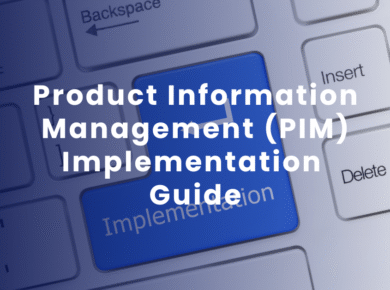How Will GenAI Redefine the Hybrid Shopper Experience? Read Blog Holiday shopping
In the age of digital commerce, Product Information Management (PIM) has evolved from a “nice-to-have” system to a critical foundation for operational efficiency and customer experience. For enterprise decision-makers, especially CTOs and IT leaders, selecting the right PIM vendor means looking beyond features and examining long-term value, integration flexibility, and business enablement.
Here’s a curated set of thoughtful questions to guide your selection process, rewritten and reorganized for real-world relevance.
1. Is it easy for the existing system to be integrated with the PIM platform?
A robust PIM system should seamlessly integrate with your ERP, MDM, DAM, and other core systems without requiring extensive customization. Smooth integration ensures faster adoption and reduces the risk of data silos, making the system a natural extension of your enterprise architecture.
2. Can your teams define and enforce data validation based on specific product types and taxonomy levels?
Different product categories often require different validation rules. A capable PIM must support granular configurations — allowing teams to set rules that reflect the complexity of your product hierarchy while maintaining data integrity.
3. Does the PIM system is flexible enough to onboard unstructured or inconsistent product data?
Enterprise product data rarely arrives clean or standardized. The platform should be able to ingest and handle partially formatted or messy datasets without requiring intensive pre-cleaning. This flexibility supports faster onboarding and scalable governance.
4. Are business users able to create and manage product attributes independently?
The ability for non-technical teams to define and edit product attributes without involving IT helps organizations stay agile. A flexible PIM system empowers marketing, e-commerce, and merchandising teams to respond faster to market and customer needs.
5. How easily can new data sources and attributes be introduced into the system?
Modern commerce demands rapid adaptation. A PIM platform should support dynamic data integration, whether from new suppliers, marketplaces, or internal tools, while preserving validation workflows and consistency.
6. Does the platform provide granular user permissions and governance controls?
An enterprise-ready PIM should let you define who can access, edit, approve, or delete specific data sets or properties. These access controls help protect sensitive content and align with compliance requirements in regulated industries.
7. Can monitoring of product completeness and quality be conducted without impacting system performance?
Real-time visibility into catalog health is essential, but it shouldn’t slow down data input or disrupt business workflows. The platform should assess completeness, accuracy, and other quality metrics in the background while users continue working efficiently.
8. How advanced are the search and metadata filtering capabilities of the platform?
With vast catalogs and growing data volume, search must go beyond keywords. Business users should be able to filter by metadata such as publication status, update history, or completeness to pinpoint areas for optimization or remediation.
9. Does the platform offer a centralized view of all data tied to product operations?
A modern PIM should consolidate information across product attributes, inventory, orders, media assets, and even customer behavior. A single source of truth boosts collaboration across departments and reduces reliance on fragmented systems.
10. How efficiently can the system manage and distribute digital assets?
Managing high volumes of media, including images, videos, documents, and rich content, requires more than storage. A smart PIM system supports centralized management, enrich and distribution of digital media assets to all sales channels.
Want to go deeper? Read Part 2 here for the next set of questions focused on workflows, AI, and digital shelf intelligence.
Latest Resources
How Unified Data Can Keep You Ahead This Holiday Read Blog As
Enterprise Data Management in Transition: 2026 Trends and AI-Driven Shifts Read Blog
Unlocking Growth: Why PIM DAM Integration Is a Strategic Imperative Read Blog
Mastering Product Data Syndication: A Business-Centric Approach Read Blog Why Accurate Product
The Hidden Costs of Missing Metadata in Digital Asset Management Read Blog
Key Takeaways: Identify the Right Time for PIM: Gain clarity on identifying
PIM vs MDM: What’s the Difference and When to Use Each? Read
Questions to Ask When Choosing a PIM Vendor? - Part 2 Read
Questions to Ask When Choosing a PIM Vendor? - Part 1 Read









